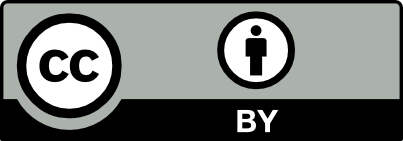DOI 10.15507/2079-6900.23.202101.91–109
Original article
ISSN 2079-6900 (Print)
ISSN 2587-7496 (Online)
MSC2020 76D07, 76D09, 76D17
Hydrodynamic mechanism of movement of catalytic micro-/nanomotors
S. I. Martynov, L. Yu. Tkach
Surgut State University (Surgut, Russian Federation)
Abstract. A hydrodynamic mechanism of movement of a micro/nanomotor with a dipole charge induced by an electro-catalytic reaction on its surface and the formation of charges in the surrounding liquid is proposed. For this, the dynamics of a dipole aggregate in a cloud of small oppositely charged particles in a viscous fluid surrounding it is simulated. Under the action of the field of the aggregate, the particles in the cloud are set in motion, which forms a flow in the surrounding fluid. In turn, the flow creates a hydrodynamic force that moves the aggregate. The hydrodynamic interaction of all particles in the cloud with each other and with the dipole aggregate is taken into account at their different distributions in the liquid around the dipole. The total charge of all small particles can be either equal to zero or have a non-zero value. The calculations carried out confirmed the possibility of the dipole unit to move in all the cases considered as a result of action of the hydrodynamic force created by the formed flow of the surrounding fluid. In this case, the speed and direction of dipole movement significantly depends both on the distribution of small particles in the surrounding liquid and on their total charge. As the result of asymmetry in the distribution of small charged particles in the surrounding fluid, dipole unit will move not only in longitudinal but also in transverse direction. This leads to the need to use some mechanism of controlling its movement. As such a mechanism the action of an external field can be used, orienting the dipole unit in a given direction of motion. It is proposed to use an external magnetic field for such control. In this case, the dipole aggregate must have a magnetic moment due to the presence of a magnetizable nucleus inside the particles.
Key Words: viscous fluid, charged particles, hydrodynamic interaction, dipole aggregate, micro-/nanomotor
For citation: S. I. Martynov, L. Yu. Tkach. Hydrodynamic mechanism of movement of catalytic micro-/nanomotors. Zhurnal Srednevolzhskogo matematicheskogo obshchestva. 23:1(2021), 91–109. DOI: https://doi.org/10.15507/2079-6900.23.202101.91–109
Submitted: 03.12.2020; Revised: 15.02.2021; Accepted: 27.02.2021
Information about the authors:
Sergey I. Martynov, Chief Researcher, Surgut State University (1 Lenina av., Surgut, 628412, Khanty-Mansiysk Autonomous District - Yugra, Russia), Dr. Sci. (Physics and Mathematics), ORCID: https://orcid.org/0000-0001-6420-3315, martynovsi@mail.ru
Leonilla Yu. Tkach, Researcher, Surgut State University (1 Lenina av., Surgut, 628412, Khanty-Mansiysk Autonomous District - Yugra, Russia), ORCID: https://orcid.org/0000-0002-8814-9285, leonilla7777@mail.ru
All authors have read and approved the final manuscript.
Conflict of interest: The authors declare no conflict of interest.
 This is an open access article distributed under the terms of the Creative Commons Attribution 4.0 International License.
This is an open access article distributed under the terms of the Creative Commons Attribution 4.0 International License. 